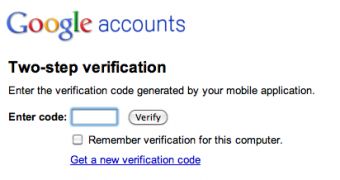Google has just announced that users of the paid editions of Google Apps now have access to a two-step authentication system, to make logins more secure. But Google has also made the system available to developers who have applications in the Apps Marketplace.
"Until yesterday, Google Apps customers using Google Apps’ built-in authentication mechanisms needed to provide a username and password (something they knew) to log in," Ryan Boyd, Google Apps Marketplace Team, wrote.
"Our launch of 2-factor authentication, which we’re calling Two-step verification, enables users of Premier, Education and Government Editions to additionally require having something in possession- a mobile phone- to log in," he said.
"So, if you’re a Marketplace developer and your customer asks you if your app supports 2-factor auth, you can answer an emphatic 'yes' and send them over to the Marketplace to add your app to their domain," he added.
The two-step verification system is already available to Apps customers and it also covers Marketplace apps. Any application installed on a domain will use the same authentication system as the regular Apps.
This should come in handy for administrators who want the added layer of security the two-step verification system provides but also have custom applications installed.
App developers don't have to do anything to add support for the new feature. Since Apps already requires any application in the Marketplace to use Single Sing-On, which is based on OpenID, Google can do any change on its end without disrupting the system.
In this case, it was able to implement the two-step verification system transparently and have it enabled without users and developers being interrupted.
Two-step verification requires users to provide a code along with the username and password. This code is sent to the user's phone or is generated locally, so a third-party possessing the credentials would not be able to do anything with them.

 14 DAY TRIAL //
14 DAY TRIAL //